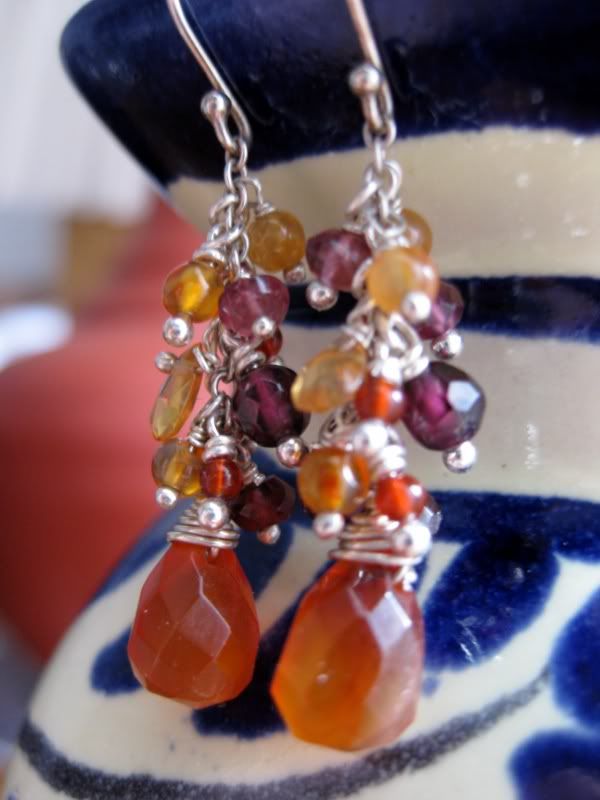This is the first in a series of jewelry design how-to posts. Upcoming posts will focus on jewelry models, including stacked and dangle earrings, lariats, custom findings, and more.
Inspiration has struck and you have a dashing idea in mind. It may be a colour scheme, a shape, or a detailed vision. Your storage boxes are well stocked with beads, findings, chain, and wire. You break out your pliers and some sterling silver headpins, wrap, twist, loop and snip, only to find that your vision looked better in the dreamy recesses of your mind.
The #1 resource that will prevent you from chopping through expensive precious metal wire as you dismantle an unflattering design is
coloured craft wire. It's cheap, easy to work with, and available at run-of-the-mill craft supply shops. Craft wire is made out of base metal (e.g. copper, brass) or base metal plated with precious metal. It comes in a range of gauges; the higher the gauge, the thinner the wire.
Rather than creating a ready-to-wear jewelry piece, I suggest always creating a prototype using craft wire. If a design calls for head or ball pins, either purchase base metal headpins, or curl in the end of a piece of wire with your round-nose pliers.
Using craft wire, you can make variations of the same design with different beads, or use the same beads to make different designs. For instance, I used gold craft wire to make two simple stacked earrings: one with carnelian round accent beads, and one with citrine rondelle accent beads.
Once your are satisfied with your prototype, remake it using your chosen precious metal wire. If using semiprecious stones, I don't suggest leaving the craft wire design hanging around too long as a dark circle will build up around the bead hole as the wire oxidizes.
Unless you have an unlimited stock of precious metal wire, it's also a good idea to use coloured craft wire in designs where the wire will not show or is not a feature of the design. Wire-wrapped barrettes are a good example:























